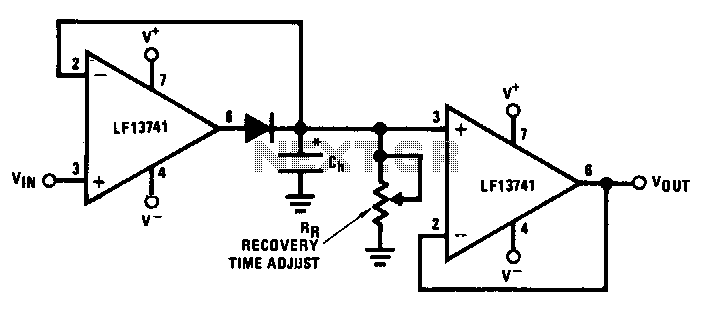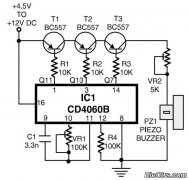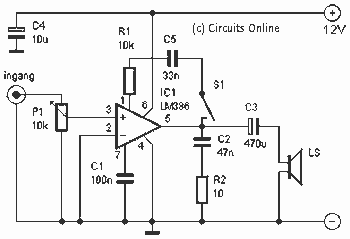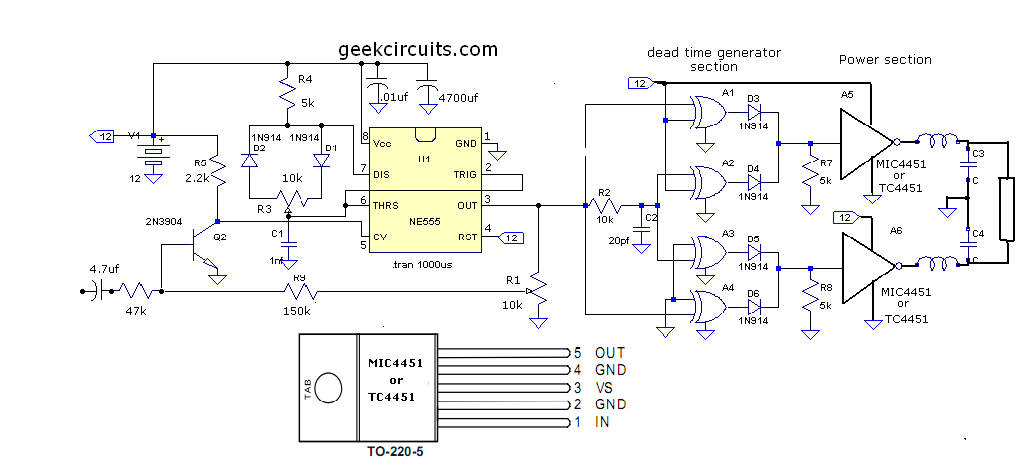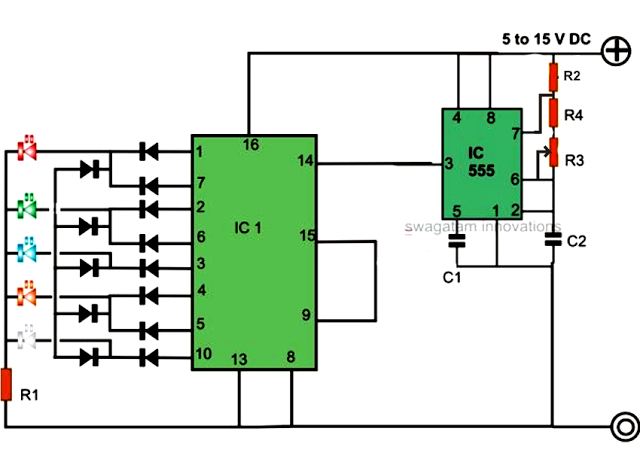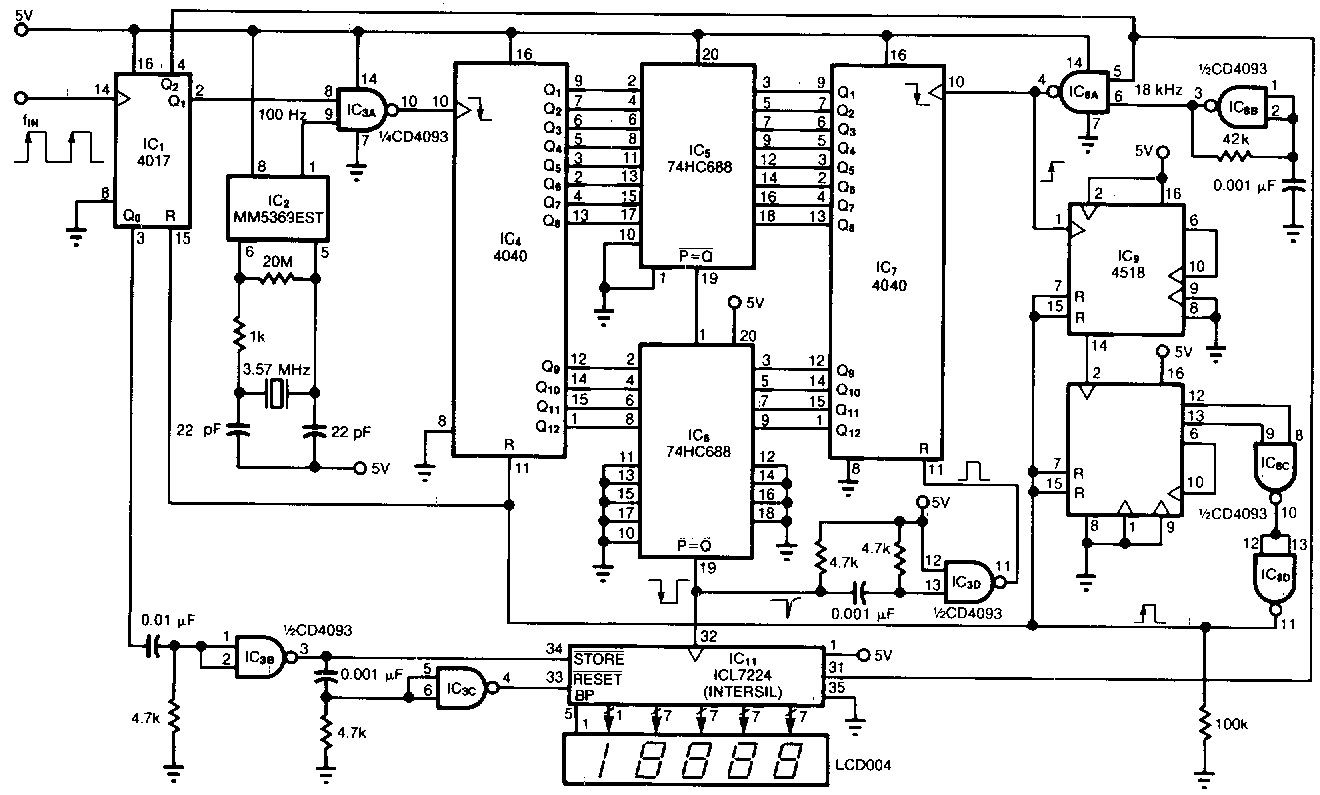
metal detector using beat frequency
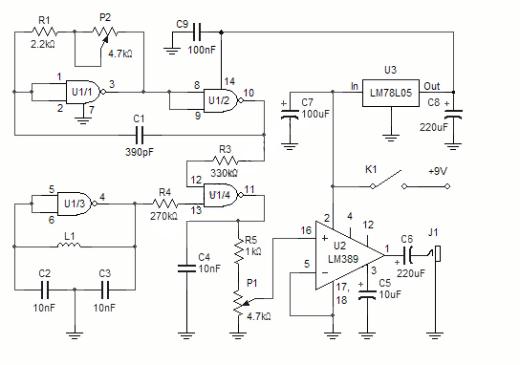
The NAND gates utilize a CMOS 4011 chip, which is a low-power component ideal for battery-operated circuits. This chip is powered by a 5V voltage supplied from an LM7805L regulator. The purpose of this regulation is to maintain a constant voltage source for the reference oscillator's frequency stability, as the frequency can be influenced by variations in the power supply voltage, particularly as the voltage of the 9V battery decreases over prolonged use.
The CMOS 4011 chip is a quad 2-input NAND gate that offers significant advantages in low-power applications, making it suitable for battery-operated devices. The LM7805L is a linear voltage regulator that provides a stable output voltage of 5V, which is essential for ensuring the reliable operation of the NAND gates. As the battery discharges over time, its voltage can fluctuate, which may lead to instability in the oscillator frequency if the power supply is not regulated.
The LM7805L regulator operates by accepting a higher input voltage—in this case, the 9V from the battery—and outputting a regulated 5V. It features built-in overcurrent and thermal protection, which enhances the reliability of the circuit. The input and output capacitors are recommended to stabilize the voltage and improve transient response. Typically, a 0.33µF capacitor is placed at the input, while a 0.1µF capacitor is placed at the output of the LM7805L to filter out noise and ensure smooth operation.
In summary, the combination of the CMOS 4011 NAND gates and the LM7805L voltage regulator creates a robust and efficient circuit that operates effectively in battery-powered applications. The regulated 5V supply ensures that the NAND gates function optimally, maintaining oscillator frequency stability despite the gradual decline in battery voltage. This design consideration is crucial for applications requiring consistent performance over extended periods.The NAND gates use CMOS 4011 chip, a low power component that is suitable for this battery-operated circuit. You can see that this chip is supplied by a 5V voltage coming from an LM7805L regulator. You might wonder what the purpose of this regulation is, since the power supply come from a 9V battery and the CMOS gates can handle the voltage of 3-1
5 Volt. The main purpose of the regulator is to keep a constant voltage source for the reference oscillator frequency stability, since the frequency is affected by the power supply voltage variation as the battery voltage drops in the long time of usage. 🔗 External reference
The CMOS 4011 chip is a quad 2-input NAND gate that offers significant advantages in low-power applications, making it suitable for battery-operated devices. The LM7805L is a linear voltage regulator that provides a stable output voltage of 5V, which is essential for ensuring the reliable operation of the NAND gates. As the battery discharges over time, its voltage can fluctuate, which may lead to instability in the oscillator frequency if the power supply is not regulated.
The LM7805L regulator operates by accepting a higher input voltage—in this case, the 9V from the battery—and outputting a regulated 5V. It features built-in overcurrent and thermal protection, which enhances the reliability of the circuit. The input and output capacitors are recommended to stabilize the voltage and improve transient response. Typically, a 0.33µF capacitor is placed at the input, while a 0.1µF capacitor is placed at the output of the LM7805L to filter out noise and ensure smooth operation.
In summary, the combination of the CMOS 4011 NAND gates and the LM7805L voltage regulator creates a robust and efficient circuit that operates effectively in battery-powered applications. The regulated 5V supply ensures that the NAND gates function optimally, maintaining oscillator frequency stability despite the gradual decline in battery voltage. This design consideration is crucial for applications requiring consistent performance over extended periods.The NAND gates use CMOS 4011 chip, a low power component that is suitable for this battery-operated circuit. You can see that this chip is supplied by a 5V voltage coming from an LM7805L regulator. You might wonder what the purpose of this regulation is, since the power supply come from a 9V battery and the CMOS gates can handle the voltage of 3-1
5 Volt. The main purpose of the regulator is to keep a constant voltage source for the reference oscillator frequency stability, since the frequency is affected by the power supply voltage variation as the battery voltage drops in the long time of usage. 🔗 External reference
